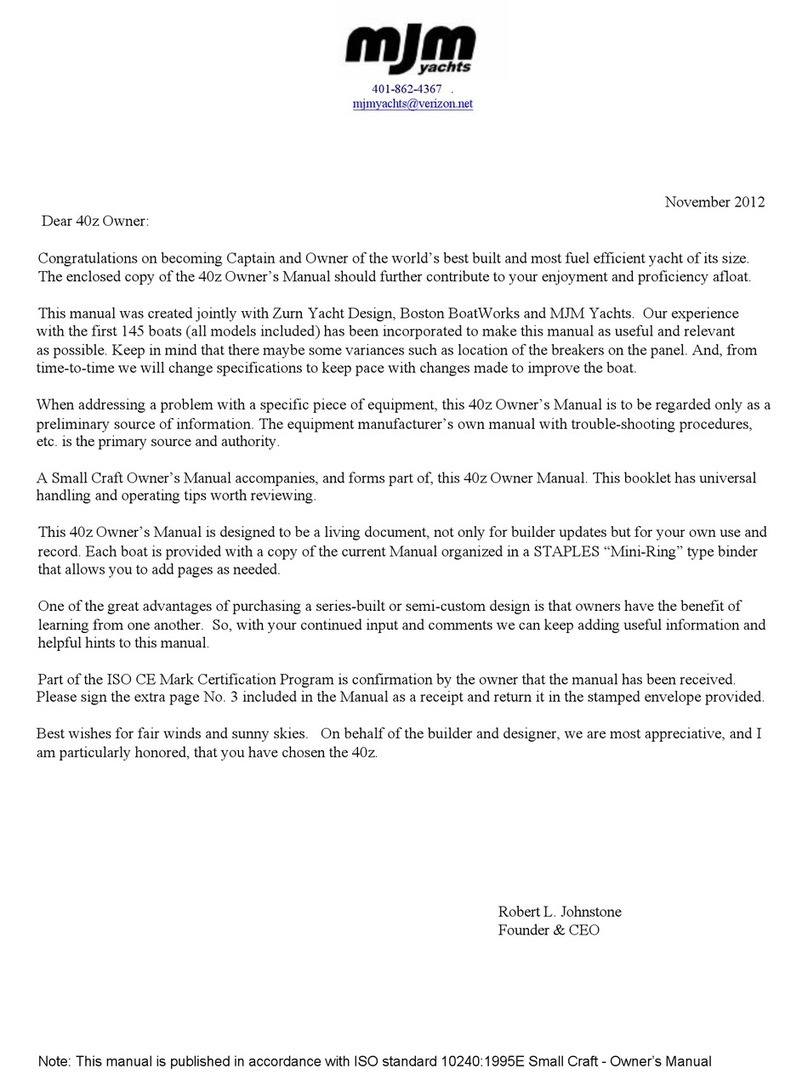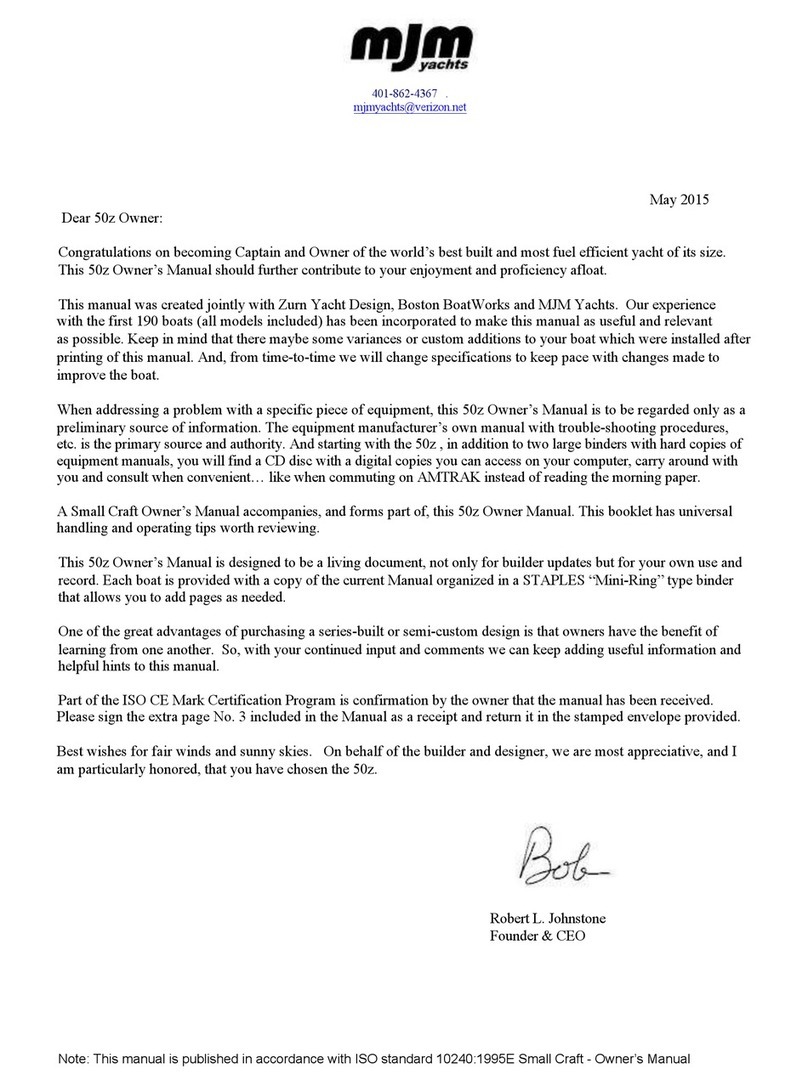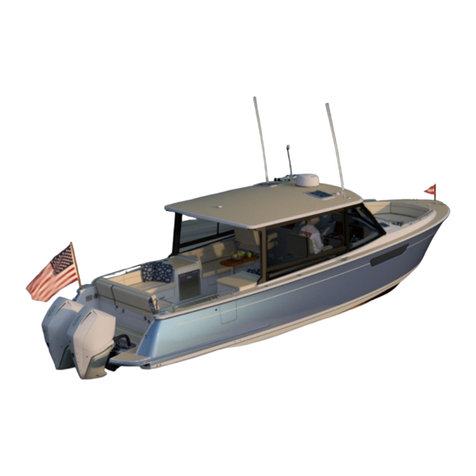1INTRODUCTION
1.1 PURPOSE AND LIMITATIONS
This purpose of this Owners Guide and the equipment suppliers’ manuals in
the accompanying binders is to provide you with an overview of the yacht’s
equipment, operation, systems and maintenance. The people at MJM and
Boston BoatWorks have taken pains to edit this guide for accuracy in good
faith. Most of these topical require further study and learning by the captain of a
vessel who assumes extensive responsibilities for safe operation of the vessel
and for safety of the crew.
This summary guide of yacht equipment and operation will never be complete
or accurate in all respects. And, since we frequently make improvements, we
assume no responsibility for missing information or errors contained herein. This
document doesn’t replace common sense nor qualify the reader in safety
practices, boat handling or navigational skills. Mastering these systems and the
skills of seamanship is each owner’s/captain’s responsibility. If this is your first
yacht, or if you’re changing from a different type of yacht, please get instruction
and experience before assuming command. Your dealer, yacht club, marina or
the US Power Squadron https://www.usps.org are all good resources that can
recommend licensed captains, schools or other instructional entities.
Although this guide and the accompanying binders describe systems on the
boat, they don’t qualify you to work on them. When they need attention, please
use qualified and certified trades personnel. If you question the information or
are unsure about an action, check with the equipment supplier, a qualified
person or us.
The Appendix includes other useful information. And there’s a chapter on the
people who create MJM yachts you can contact if you need help. Study these
resources to understand how to operate your yacht safely.
The operation of a powerboat can be dangerous. Pay careful
attention to safety notices in this guide and in the manuals in the binders.
Keep this guide in a secure place on the boat. If you sell the yacht, please give
this copy to the new owner.
1.2 STANDARD SPECIFICATIONS
You may download the latest version of this guide and the standard
specifications for a MJM35z from http://www.mjmyachts.com/35z to install on
your computer, an iPad or navigational display.
1.3 CONVENTIONS
When we reference a specific device or item of equipment on the boat, it will
be in all caps, such as HOUSE BATTERY.
As we describe each device we often use the following order.
1. BREAKER PANEL settings
2. Function, what it does
3. Directions for use
4. Advice or comments in a sidebar
5. The URL for the manual if available
This guide is published in accordance
with ISO standard 10240:1995E Small
Craft - Owner’s Manual.
Please contact us if you have a question
about the material in this book, if you find
a conflict between this material and the
material in the binders or if you find an
error or important omission on the
following pages please contact
Customer Service at Boston Boat
Works.
…R.I.J.

































